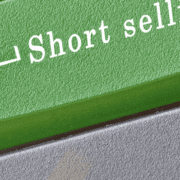The Trillion Dollar Coin
There has been much buzz in the past few days about a truly horrible idea. Instead of having to negotiate with Congress to raise the debt ceiling so the Treasury Department can sell more bonds to pay for more spending, why not just mint a trillion-dollar platinum coin? This coin would contain one ounce of platinum, worth about $1,500 in reality. By law, it would be magically assigned a value of one trillion dollars. Even at first glance, this is just a bad idea.
In this paper, I first present some conventional analysis. Following that I offer my own insight which I hope attacks this notion from a different angle.
Seigniorage has existed for millennia. Through seigniorage, the government can declare by fiat that the value of a coin is greater than the value of its metal content. In the case of the trillion-dollar one-ounce platinum coin, the metal content is de minimis and the fiat value is $1,000,000,000,000. This would be counterfeiting on a monstrous scale.
None other than Paul Krugman supports this idea, notorious for the “broken window theory” (yes, he really did rewrite the old broken window fallacy debunked by Frederic Bastiat into a “theory”: http://www.acting-man.com/?p=19668). Krugman asserts that the trillion dollar coin will do no harm at all (http://krugman.blogs.nytimes.com/2013/01/07/be-ready-to-mint-that-coin/), thus proving the adage that it takes a PhD to truly unlearn what one knew at age 6!
Looking deeper, one gets an uneasy sense that this could be a game changer. We currently have the second-worst kind of monetary system, in which an irredeemable currency is borrowed into existence under the central planning of a central bank. The only system which would be worse is one in which politicians can outright create money at will.
I have been a staunch opponent of the various hyperinflationary predictions, which are mostly based on the quantity theory of money and its specious logic that prices rise in proportion to an increase in the (debt-based) “money supply”. But this trillion-dollar coin is not borrowed into existence. Indeed, that’s the whole point. It is simply minted by the Treasury at will.
Like the power of the One Ring in JRR Tolkien’s classic fantasy trilogy, the power to print money will be too tempting to resist. Unlimited printing (or minting with seigniorage) would be a very different process from the present scheme of borrowing. It could lead to the hyperinflation of the US dollar and its derivatives like the euro, pound, etc. This could be a process of overloading the remaining incentives for production in what’s left of our markets, such that while more and more people and assets are rendered unproductive, they are outright gifted with more and more counterfeit “money” with which to buy dwindling supplies of goods especially food and energy. This process could run away.
Now let’s look at the impact to the credit markets. Today, credit drives everything. And the transition from borrowing to coin “printing” would have a large impact.
In the short term, there could be chaos as Treasury bonds stop flowing to the market. Would interest rates drop as the remaining dwindling supply of Treasury bonds are bid up further? Many institutions have a mandate by law and/or charter to buy Treasury bonds. This is one reason why the rate of interest is not set by inflation expectations. Japan’s debt problem is far worse than that of the US, and their interest rate is about half.
Would the Fed end “Quantitative Easing” and stop buying Treasury bonds? That could have some huge and possibly surprising results. It may very well be that interest rates continue to fall, despite no Fed purchases of bonds. An irredeemable paper currency is a closed-loop system. The dollars have to go somewhere, and if you buy a tangible good such as gold then the seller of the gold now has the dollars. What will he do with them? Deposit them in a bank, most likely. What will the bank do? Likely it will buy Treasury bonds. If not Treasury bonds, what else can a bank buy to earn a predictable spread above the rate they paid to the depositor?
If the Fed does not stop buying Treasury’s, it could be even worse. The Fed would own more and more of the total issuance of bonds, especially since they are focused on the long end of the curve. What would be the consequences if the Fed owned substantially all Treasury bonds outstanding? I can think of several things:
- The average duration of the Treasury debt held by the public would continue its fall to zero—this is concerning because a 30-year bond is not currency, but a 30-day bill is very close to currency
- The interest rate would likely fall sharply
- The banks’ game of borrowing short from the Fed to lend long to the Treasury would end and banks would be deprived of a source of cash flow—what can they do to replace it?
- Treasury bonds are used as collateral, ceteris paribus credit would be harder to obtain
- The marginal debtor would be forced into default (deflation: http://keithweiner.posterous.com/inflation-an-expansion-of-counterfeit-credit)
- Treasury bonds are used in many arbitrages, which would be drastically affected
Let’s look at item #6. Consider the following set of transactions that are executed simultaneously:
1) borrow dollars
2) buy a gold bar
3) sell a gold future
This trade will occur so long as this is true:
gold basis > funding cost
The gold basis = Future(bid) – Spot(ask). This is because to buy gold in the spot market, you must pay the ask, and to sell it in the futures market you must accept the bid. The gold basis is normally a positive number and it moves around like every other price in the markets.
Big banks pay nearly zero interest to borrow today. For a variety of reasons outside the scope of this paper, the short-term interest rate is generally (but in a paper monetary system not always!) below the interest rate on a long-term bond. If the interest rate on long Treasury bonds is forced downward, that would likely push down the short-term funding costs. This would push down the gold basis, because the trade will continue until the basis is just above the funding cost. This drives gold closer to, if not outright into, permanent backwardation (http://keithweiner.posterous.com/when-gold-backwardation-becomes-permanent).
A drop in the interest rate available on deposits would further harm savers, people who live on a fixed income, discourage savings, and encourage risk-taking in order to find a little yield somewhere. Maybe this could fuel another subprime mortgage fiasco, or give Greece the money to continue for a few more years.
If the gold lease rate < Treasury bond interest then two more legs would be added to this arbitrage:
4) lease the gold out
5) buy a Treasury bond
The term “gold lease” is slightly misleading. What happens is that one swaps one’s gold for dollars. One must pay additional dollars in the form of interest at maturity.
As the Treasury rate falls, it could have the effect of pushing down the gold lease rate. Or it could have another effect: discouraging the marginal carrier of gold (steps 2 and 3 comprise a gold carry). This would let the basis rise, though not because the monetary system is healing. This would be a case of widening spreads signaling decreasing economic coordination (discussed under “distortion” in section 2.1 in: http://keithweiner.posterous.com/a-free-market-for-goods-services-and-money).
There are other arbitrages involving Treasury bonds and gold.
And of course there are many arbitrages involving Treasury bonds without gold. A simple one (which I think is a mistake) is: short Treasury / long dividend-yielding stock. Every arbitrageur has his own notion of what the spread between a dividend yield and the Treasury should be.
Treasury bonds are also used in sale and repurchase agreements, which are like loans with the Treasury used as collateral. What would happen if Treasury bonds were less available because the Fed is now minting dollars rather than borrowing them into existance? We would speculate that it would make it more difficult for market participants to obtain credit. This would manifest in the economy as a slowing of the rate of credit expansion (inflation). This author contends that in an irredeemable currency, credit must always be expanding. Because there is no extinguisher of debt, debtors must, in aggregate, borrow the money to pay the net interest. This newly borrowed money carries interest, which must be borrowed, and so on,, in and endless cycle of borrowing more at an exponentially rising rate.
There is, additionally, an arbitrage between Treasury bonds and corporate bonds. This means that as the Treasury rate falls, the corporate rate falls. This causes both government and corporate debtors to experience a destruction of capital (http://keithweiner.posterous.com/a-falling-interest-rate-destroys-capital). This will drive them to default eventually (deflation).
There are numerous arbitrages that depend on the Treasury bond. Each of them is impacted by a change in the rate of interest. Analysis of any one of them is non-trivial, as should be clear from the survey above. A comprehensive market forecast based on this would be a monumental undertaking. My goal in this paper is to introduce some of the factors to consider and a few of the first-order consequences of a transition from borrowing to printing. While we cannot predict everything that would happen, we can clearly see that printing a trillion dollars would have a number of very destructive effects.







